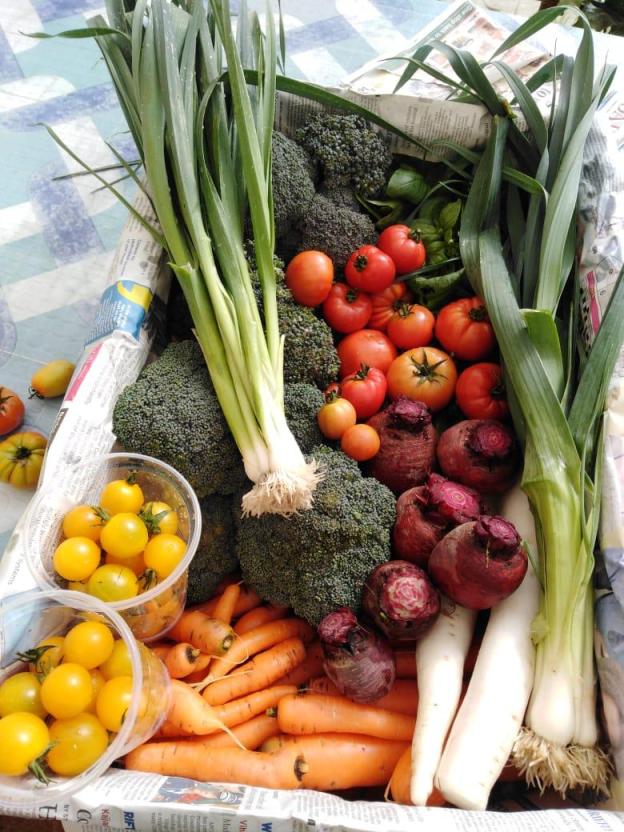Having attended numerous Farmers Day Exhibitions, a certain inspiration was kindled within me that compelled me to write this blog post. I recollected an enlightening article, which I came across on https://nation.africa/kenya/blogs-opinion/blogs/pesticide-myths-and-lies-standing-in-the-way-of-sustainable-farming-in-kenya–3459362, that exposed some of the false beliefs disseminated at most of these events. The purpose of this blog is to dispel these misconceptions and advocate for a more widely acknowledged yet scarcely practiced alternative approach.
These myths are pervasive and can be heard at most farmers’ events. However, they are often not based on facts and can lead to harmful consequences. The following are some of the common myths that I will be dispelling:
- The belief that pesticides are the only way to control pests and diseases in crops,
- The assumption that organic farming means not using any pesticides or fertilizers,
- The idea that pesticides only affect pests and are safe for humans and the environment,
- The misconception that pesticide residues in food are not harmful to human health,
- The notion that Integrated Pest Management (IPM) is too expensive and time-consuming for small-scale farmers to implement,
- The fallacy that pesticides are the only way to achieve high crop yields and food security, and
- The assumption that the government is doing enough to regulate the use of pesticides and protect consumers and the environment.
In Kenya, as in many other countries, farmers face numerous challenges in their efforts to grow crops sustainably and profitably. One of the biggest challenges is the widespread belief in certain myths and lies about pesticides that can prevent farmers from adopting more sustainable practices.
One common myth is that pesticides are the only way to control pests and diseases in crops. While pesticides can be effective in controlling pests, they are not the only solution. Integrated Pest Management (IPM) is a more sustainable approach that combines multiple strategies, including the use of biological controls, crop rotation, and cultural practices, to reduce pest and disease damage.
Another myth is that organic farming means not using any pesticides or fertilizers. While organic farming does restrict the use of synthetic pesticides and fertilizers, it does allow the use of certain natural pesticides and fertilizers that are approved for use in organic agriculture. These substances are generally considered to be safer for human health and the environment than synthetic pesticides and fertilizers.
A third myth is that pesticides only affect pests and are safe for humans and the environment. In reality, pesticides can have harmful effects on human health and the environment, especially when used improperly. Pesticides can contaminate water and soil, harm beneficial insects and wildlife, and pose health risks to farmers and consumers.
It is also a myth that pesticide residues in food are not harmful to human health. While most residues found in food are below the legal limits set by governments, there is growing evidence that even low levels of exposure to certain pesticides can have negative health effects, especially for vulnerable groups like children and pregnant women.
Finally, it is important to recognize that the government alone cannot regulate the use of pesticides and protect consumers and the environment. Farmers, consumers, and other stakeholders must work together to promote more sustainable farming practices and raise awareness about the risks associated with pesticides. By challenging the myths and lies that stand in the way of sustainable agriculture, we can build a healthier, more resilient food system for all.
Despite these myths, there are alternative approaches to pest and disease management that can help farmers achieve high crop yields and food security while also protecting human health and the environment. Integrated Pest Management (IPM) is one such approach, and there are many resources available to help farmers learn how to implement it.
Integrated Pest Management (IPM) is a sustainable approach to pest management that involves the integration of multiple strategies to reduce pest damage while minimizing the use of chemical pesticides. The goal of IPM is to maintain pest populations at levels that are economically tolerable and environmentally sustainable.
IPM is not a single technology or practice, but rather a flexible and adaptive approach that can be tailored to specific crops, pests, and environmental conditions. Successful IPM programs rely on regular monitoring of pest populations and the use of thresholds to determine when control measures are needed. By using a range of control strategies and minimizing the use of chemical pesticides, IPM can help to reduce the development of pesticide resistance, protect beneficial insects and wildlife, and minimize the risks to human health and the environment.
In conclusion, this blog highlights the need for sustainable farming practices in Kenya and the role of Integrated Pest Management (IPM) in promoting these practices. The myths and lies surrounding pesticides can be overcome by adopting more sustainable approaches like IPM, which provides a framework for reducing pesticide use while maintaining pest populations at levels that are economically tolerable and environmentally sustainable. By using a range of control strategies and minimizing the use of chemical pesticides, IPM can help to protect human health, and the environment, and promote long-term sustainability in agriculture.






Leave a comment